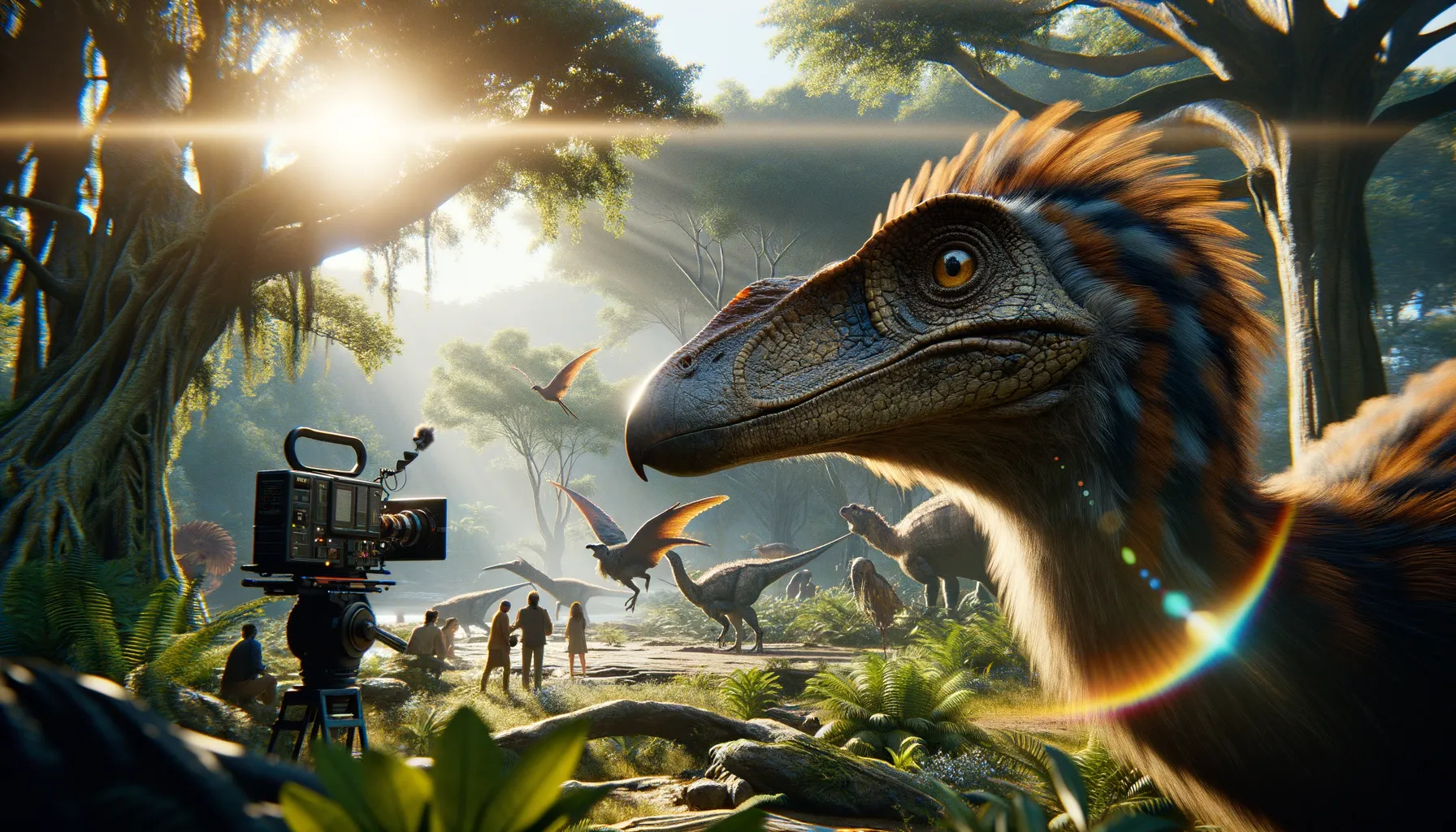
Caudipteryx
Feathered links between dinosaurs and birds.
Period
triassic
Length
Roughly 1 meter long.
Height
Around 0.5 meters tall.
Weight
Approximately 6 to 8 kilograms.
Caudipteryx was a feathered dinosaur that bridged the gap between non-avian dinosaurs and birds. It was about the size of a modern turkey and lived during the Early Cretaceous period. Known for its bird-like features such as feathers and a beak-like snout, Caudipteryx is a critical species in understanding the evolutionary transition from dinosaurs to birds.
Diet
Caudipteryx was an omnivore, eating both plant material and smaller animals or insects. Its beak-like snout suggests it was adept at foraging for a varied diet.
Hunting
It likely hunted for small prey on the ground, using its beak to capture insects. Its speed would have been adequate for catching small animals, but it likely relied more on foraging than active hunting.
Environmental challenges
Living in a dynamic Cretaceous landscape, Caudipteryx faced changes in climate and vegetation. The presence of large predators would have posed a threat, necessitating keen awareness and perhaps group behaviors for protection. Fluctuating food availability could also impact its survival, forcing adaptability in diet.
Speed
Moderate sprinter, not overly fast.
Lifespan
Estimated at around 10 to 20 years.
First discovery
First discovered in northeastern China in 1997.
Fun Facts
- Caudipteryx lived about 125 million years ago during the Early Cretaceous period.
- This dinosaur was roughly the size of a peacock and weighed around 5 kilograms.
- Caudipteryx had feathers, which suggests dinosaurs were more bird-like than previously thought.
- Its name means 'tail feather,' highlighting its bird-like plumage and short tail.
- Caudipteryx was an omnivore, meaning it ate both plants and small animals.
- Fossils of Caudipteryx have been found in the Liaoning Province of China.
- Despite its bird-like features, Caudipteryx could not fly as its feathers were more for display and insulation.
Growth and Development
Caudipteryx likely grew rapidly after hatching, reaching maturity within a few years. Its development would have been marked by the growth of feathers, increasing its insulation and possibly playing a role in display or mating rituals. Juveniles might have stayed close to adults for protection and learning.
Habitat
Caudipteryx inhabited forested areas near lakes and rivers. These environments provided abundant food resources, both plant and animal. The varied terrain supported its omnivorous diet, allowing it to thrive by exploiting different ecological niches.
Interaction with other species
Caudipteryx interacted with both fellow dinosaurs and smaller mammals, sharing its habitat. Competition for resources like food and nesting sites was likely. It may have had symbiotic relationships with other species, contributing to the ecosystem's balance.
Natural lifespan
In the wild, its natural lifespan was likely around 15 years.
Reproduction
Caudipteryx probably laid eggs in ground nests, similar to modern birds. Parental care may have played a role, with adults protecting and possibly feeding the young. Mating displays could have involved feather display to attract partners.
Social behaviour
Caudipteryx may have lived in small groups, offering mutual protection and cooperative alertness to predators. Social interactions could include vocal communication or visual displays using their feathers for identification and mating.
Fossil locations
Fossils have been primarily discovered in the Yixian Formation of China. These fossil sites offer rich insights into the Early Cretaceous ecosystem. The excellent preservation of specimens has provided valuable information about its physical traits and potential behaviors.
